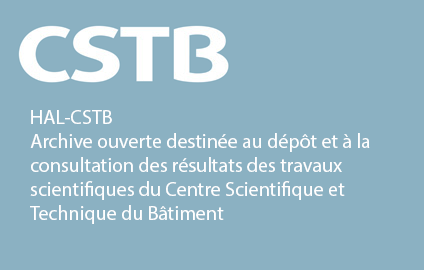Design of the citadel of Bonifacio urban area through experimental and numerical assessment of pedestrian comfort
Résumé
This paper presented a study on the optimization of the pedestrian comfort in the citadel of Bonifacio, the windiest city of Europe. Urbalterre, the urban architect agency in charge of the project combined Wind Tunnel and CFD simulations to assess and optimize the pedestrian wind comfort. The first step was an evaluation of the wind statistics at the district location. Weather data from the nearest weather station was extrapolated to Bonifacio using CFD simulations on a domain of several kilometers to take into account the local orography and roughness. The design of the district was then performed in three steps. A first assessment was carried out in wind tunnel using Particle Image Velocimetry. To our knowledge, very few studies used this type of measurements to assess wind comfort. This kind of measurements indeed requires special care to obtain sufficient accuracy due to the proximity of the laser sheet from the ground. Velocity measurements were combined with weather data to compute a wind comfort criterion. Results highlighted severe comfort issues which require an optimization of the district. A second step consists of optimization carried out by the urban architects of Urbalterre themselves thanks to the UrbaWind CFD solution. Good correlations between wind tunnel and CFD results were observed. On some locations, CFD results presented lower wind mean speed values for some Venturi effects compared to the wind tunnel results. CFD tool allowed the urban architects to iterate several versions of the district and to convergence towards an optimal solution. The use of vegetation leads to an optimized version of the district which was finally tested again in the wind tunnel. Final adjustments were performed directly in the wind tunnel using PIV measurements to optimize a Venturi effect between two buildings. The main interest of this study is the combination of PIV measurements, which proved to be a very efficient tool to assess wind comfort in wind tunnel, and CFD simulations which were carried out by the urban architects themselves to iterate various solutions. The configuration of the Montlaur Citadel, due its location above 60m cliffs and the impressive statistics of the wind blowing on the South of Corsica Island, was a tough challenge regarding the optimization of pedestrian wind comfort. Again, the use of the vegetation has proven to be one of the most efficient way to optimize pedestrian wind comfort when designing a urban area.
Fichier principal
 Design_of_the_Citadel_of_Bonifacio_urban_area.pdf (924.61 Ko)
Télécharger le fichier
Design_of_the_Citadel_of_Bonifacio_urban_area.pdf (924.61 Ko)
Télécharger le fichier
Origine : Fichiers produits par l'(les) auteur(s)
Loading...
